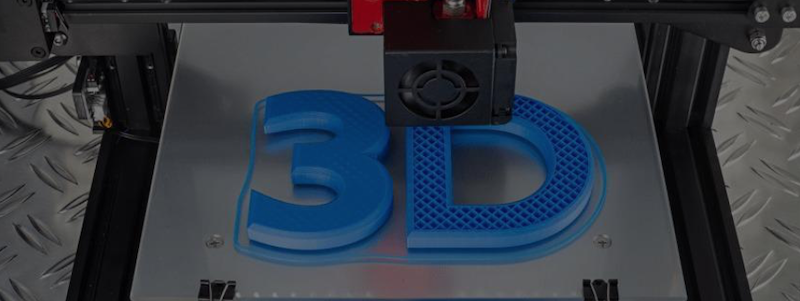
Advancements in 3D Printing for Robotics: Pioneering the Future of Automation
Over the past decade, the integration of 3D printing technology with robotics has revolutionized the way we conceive and construct robotic systems.
This synergy has opened up new horizons in automation, enabling the creation of complex and customized robotic components with unprecedented precision.
As the demand for more sophisticated robots continues to rise across industries, the latest developments in 3D printing for robotics are at the forefront of innovation.
Attributes of Excellent Robotics 3D Printers
Precision and accuracy are number one. One of the paramount attributes of a top-tier robotics 3D printer is its ability to achieve unparalleled precision and accuracy.
This ensures that intricate components, such as gears, joints, and intricate sensor mounts, are fabricated to exact specifications, reducing the margin for error in the assembly process.
Material versatility is also key. The best 3D printers for superior robotics printing offer a wide range of compatible materials, from high-strength polymers to advanced metals like titanium and aluminum.
This versatility empowers engineers and designers to select the optimal material for each component, considering factors such as strength-to-weight ratio, flexibility, and thermal resistance.
Speed and efficiency need to be considered. Efficiency in production is crucial, especially for industries with time-sensitive projects.
Exceptional robotics 3D printers boast high print speeds and efficient layer-by-layer deposition techniques.
This accelerates the manufacturing process while maintaining the precision and quality necessary for robotics applications.
The build volume and scalability of your projects will direct you towards the printer you need. The build volume of a 3D printer dictates the maximum size of components that can be produced.
Leading robotics 3D printers offer substantial build volumes, enabling the fabrication of larger and more complex parts in a single print run.
Additionally, scalability allows for the simultaneous printing of multiple components, enhancing productivity.
Ease of use and integration are not always top of mind when purchasing a printer, but they are hugely impactful to how successful and streamlined your project will unfold.
Intuitive user interfaces, seamless software integration, and user-friendly workflows are essential attributes of an excellent robotics 3D printer.
This ensures that engineers and designers can efficiently translate their concepts into physical prototypes, facilitating a smoother transition from ideation to production.
Breakthroughs in 3D Printing Materials for Robotics
Advanced composites are materials engineered by combining two or more distinct substances, often reinforcing fibers with a matrix, to create a material with superior strength, durability, and other desired properties.
Recent strides in material science have led to the development of advanced composites that combine the strengths of multiple materials.
For instance, carbon fiber-reinforced polymers offer exceptional strength-to-weight ratios, making them ideal for constructing lightweight yet robust robotic structures.
Metal additive manufacturing, also known as 3D metal printing, is a cutting-edge manufacturing process that involves layer-by-layer deposition of metal powder or wire to create intricate and customized metal components with high precision and structural integrity.
The integration of metal 3D printing with robotics has unlocked a new realm of possibilities.
Components printed in metals like titanium and aluminum exhibit superior strength, durability, and heat resistance, making them indispensable for applications in harsh environments and industries such as aerospace and automotive.
Applications and Implications
Customized prosthetics and exoskeletons are personalized medical devices designed to fit an individual’s specific anatomy, providing enhanced mobility and functionality for those with limb loss or mobility impairments.
The marriage of 3D printing and robotics has led to groundbreaking developments in the field of customized prosthetics and exoskeletons.
By tailoring these devices to the specific needs and anatomies of individuals, we’re witnessing a transformative shift in rehabilitation and mobility solutions.
On-demand spare parts refer to components or parts that are produced as needed, rather than being pre-manufactured and stored in inventory, reducing downtime and costs for industries relying on critical machinery or equipment.
Industries relying on robotics for critical operations are benefitting from the ability to produce on-demand spare parts.
This not only reduces downtime but also eliminates the need for large inventories of pre-manufactured components, leading to significant cost savings.
The Future of 3D Printing in Robotics
As technology continues to advance, we can anticipate even more remarkable developments in the intersection of 3D printing and robotics.
Innovations like multi-material printing, bio-inspired structures, and AI-driven design optimization are on the horizon, promising to further elevate the capabilities of robotic systems across industries.
In conclusion, the integration of 3D printing with robotics is reshaping the landscape of automation.
With attributes like precision, material versatility, speed, scalability, and ease of use, the latest generation of robotics 3D printers is poised to unlock new frontiers in engineering and design.
As breakthroughs in materials and applications continue to emerge, we’re witnessing the dawn of a new era in robotics, one characterized by unprecedented customization, efficiency, and functionality.

